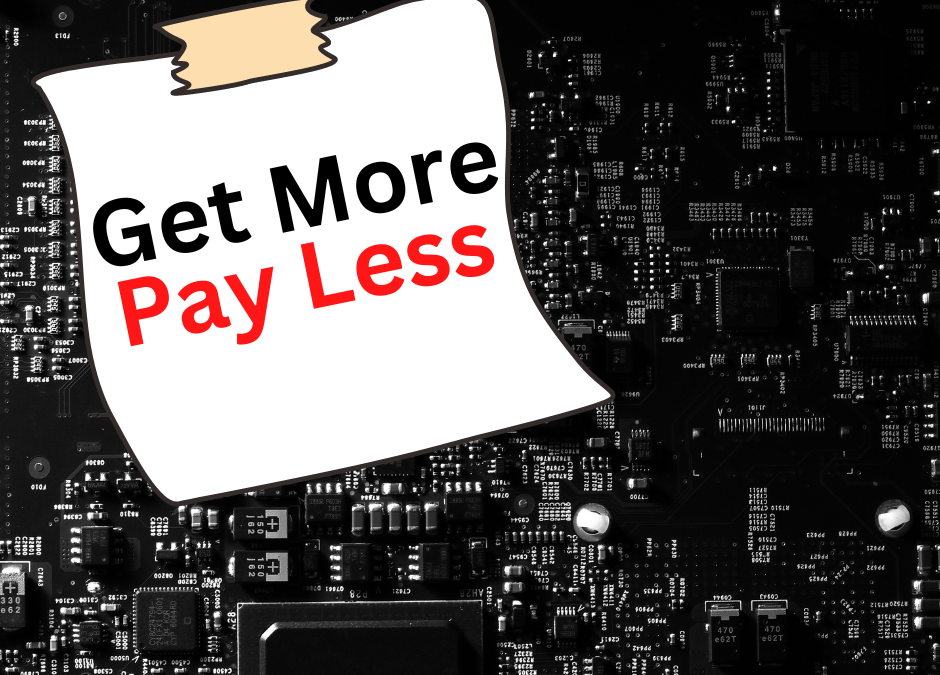
by Art Waskey | Sep 12, 2023 | Uncategorized
Digital products offer immense potential for boosting the effectiveness of your sales. But the biggest hurdle for distribution sales at present is obtaining buy-in for digital solutions. As sales professionals, we must be open to learning and utilizing new technologies Digital products offer immense potential for boosting the effectiveness of your sales. However, the biggest hurdle for distribution sales at present is obtaining buy-in for digital solutions. As sales professionals, we must be open to learning and utilizing new technologies in our sales processes.
Achieving Digital Buy-in
To get your team on board with new digital applications, the value of the technology needs to be proven. Also, experience has repeatedly taught me that to implement any new product, process, or organizational change, a successful beta test must be initiated. When a salesperson sees or hears about a successful new tool, he/she will buy in to it.
My suggestion for introducing new technology to your company is to assemble a task force with a company executive, sales manager, and outside sales team members. It would also be wise to include a technology consultant for additional expertise. The task force should then demonstrate the value of the new technology.
Digital Solutions Matter
Keep in mind, your company invests in digital solutions for a reason. Today’s savvy customers all use AI applications to decide on products early in the sales process. Sales reps often enter a sales cycle that is already 60-70% into a customer decision. A salesperson must be ready to defend the company’s position diligently. The tech stack helps you do this.
The New Tech Stack
Here is what to look for in new technology offerings and how best to leverage them for increased sales.
- Consider new software, such as voice-activated and data integrated call reviews from AI-backed conversation intelligence.
- Look into emerging capabilities in ERP, CRM, eCommerce, Product Content Management (PCM), Business Intelligence (BI), and pricing. Review calls from your AI-backed conversation applications.
- Leverage AI generated data to make more accurate sales forecasts.
- Research carefully and verify information by making multiple searches. Remember, data collected by generative AI is only as good as the information that is inputted.
Fold in New Resources
In conclusion, the tech stack is deep. Welcome its benefits and be willing to fold new resources into your sales process.
Get tips and tricks like the above in The Art of Sales books. Or subscribe to the FREE monthly articles here.

by Art Waskey | Jan 3, 2023 | Art of Sales Weekly, Uncategorized
The ERP solution
I consult with a supplier who offers a single, basic product. Nevertheless, while reviewing his strategic projects, I suggested he add finding an ERP (Enterprise Resource Planning) provider to his to-do list. His company uses apps for warehouse, accounting, and sales. But they are not coordinated through an ERP platform. The apps cannot talk to each other. So while the apps help him internally, they don’t add direct value to the customer. The solution to this digital dilemma is to synch your apps with an ERP.
Provide added values
Today, customers expect the best product quality and on-time delivery. These can be acquired through multiple supply channels with the same manufacturer’s tradename. The supplier’s challenge is to find a way to differentiate himself from his often larger competitors. In addition, with knowledge, experience, financing, and person-to-person availability, the supplier should trumpet his ability to provide these added values. To survive and thrive, these added values must be augmented and communicated using unified digitally transforming integrated software. To be a leader, the supplier must be involved on a digital basis.
Use your historical data
Moreover, to compete against evolving alternative marketplaces, suppliers must define value independently of traditional roles. Virtual marketplace alternatives exist —and are designed — to enable customers to acquire products. To maintain viability with its distributors, the supplier must offer services designed to improve a customer’s experience.
Having historic intimacy with distributors is the differentiator for the supplier. The supplier I consult with has years of stored information related to his distributor- customer spending patterns and other characteristics. Moreover, he realized that he needed to put this data into an enabling, actionable digital system (ERP). In that way, he could maintain and enhance his unique supply chain relationship going forward.
Affordable ERPs
The big virtual marketplace providers have made it easier to acquire products by investing in the initial expensive software development. As a result, today affordable ERP solutions are available to smaller suppliers. In addition, a good ERP provider can offer the supplier better communication channels. Furthermore, using the company’s historic data and connecting its existing apps. An ERP can bring added value to a supplier’s distributor customers.
Better customer relationships
Lastly, the internet has changed the way markets operate. Now is the time to capitalize on digital innovations. In conclusion, ERPs allow you to add value, at a favorable cost. And build better customer relationships.
Get tips and tricks like the above in The Art of Sales books. Or subscribe to the FREE monthly articles here.


